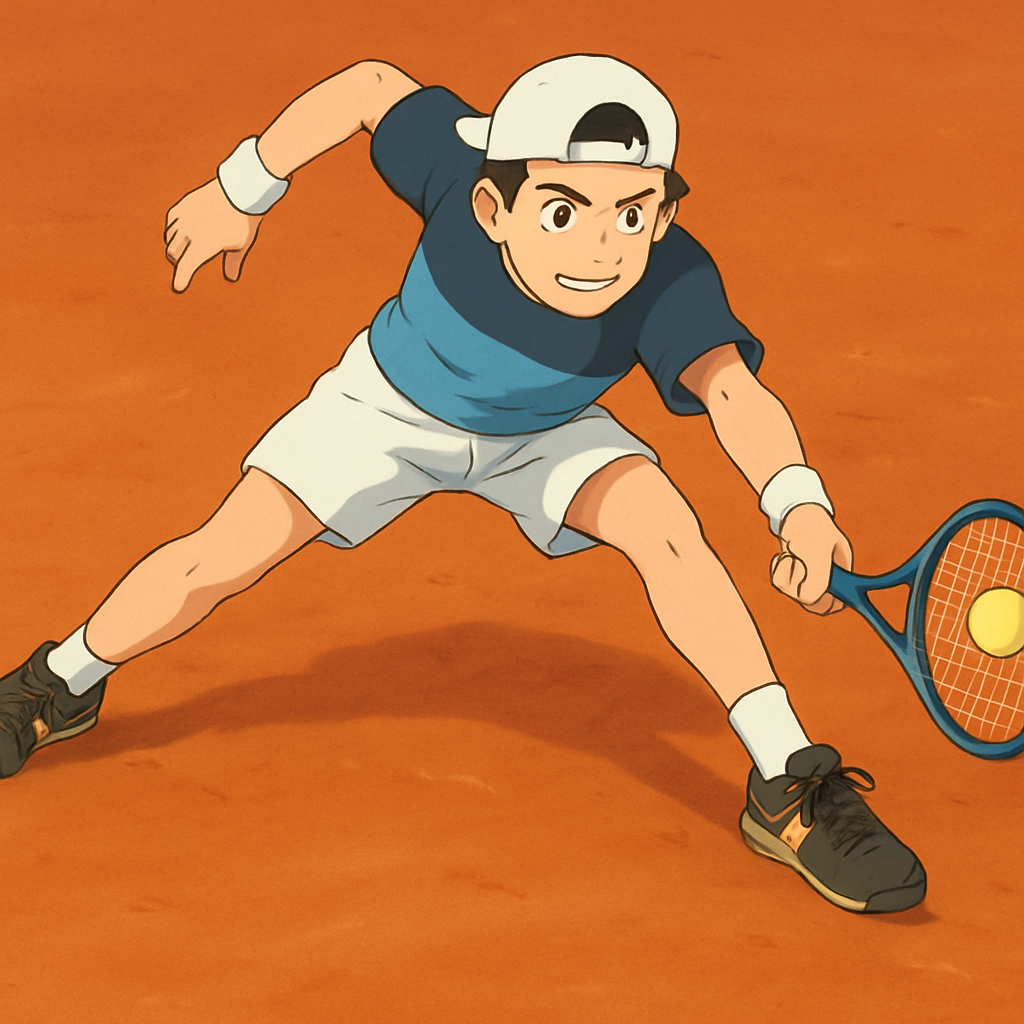PARIS — As the French Open approaches, all eyes turn to the clay courts of Roland Garros, where sliding, slicing, and powerful forehands define the game. British rising star Jack Draper has shown remarkable improvement on the surface, positioning himself as a potential contender. But what exactly makes a player excel on clay? Let’s break down the key attributes that separate the best from the rest.
The Art of Sliding: Footwork Mastery
Clay courts demand a unique style of movement. Unlike hard or grass courts, where players rely on sharp stops and explosive changes of direction, clay rewards smooth, controlled slides. "Sliding isn’t just about stopping—it’s about repositioning yourself mid-point to maintain balance and control," explains former French Open champion Gustavo Kuerten. Players like Rafael Nadal and Iga Świątek have perfected this skill, allowing them to extend rallies and recover from defensive positions.
Key Elements of Effective Sliding:
- Timing: Initiating the slide just before reaching the ball ensures stability.
- Weight Distribution: Keeping the center of gravity low prevents slipping.
- Recovery: Pushing off efficiently after the slide sets up the next shot.
The Heavy Forehand: Weapon of Choice
A powerful, topspin-heavy forehand is arguably the most lethal weapon on clay. The slower surface allows players to generate extreme spin, making the ball kick up high and bounce unpredictably. "Nadal’s forehand is the gold standard—it’s not just about power but the way it dips and jumps off the clay," says tennis analyst Craig O’Shannessy. Draper has honed this shot, using it to dictate play and force errors from opponents.
Patience & Point Construction
Clay-court tennis is a marathon, not a sprint. Long rallies are the norm, and players must balance aggression with consistency. "You can’t just blast winners here—you have to construct points, wear your opponent down, and wait for the right moment," notes 2015 French Open champion Stan Wawrinka. This strategic depth is why players like Casper Ruud thrive on clay, using their endurance and tactical intelligence to outlast opponents.
The Drop Shot & Variety
With players often positioned deep behind the baseline, the drop shot becomes a crucial tool. A well-executed drop shot can catch opponents off guard, forcing them to scramble forward on the slippery surface. "On clay, you need every trick in the book—slice, drop shots, angles. It’s chess, not checkers," says 2009 French Open winner Svetlana Kuznetsova.
Mental Toughness
The grueling nature of clay-court matches tests a player’s mental resilience. Long rallies, unpredictable bounces, and physical exhaustion require unwavering focus. "The best clay-court players embrace the grind. They don’t get frustrated by bad bounces or lost points—they adapt and keep fighting," explains sports psychologist Dr. Michael Gervais. This mindset has been key to Nadal’s 14 French Open titles and Świątek’s dominance on the surface.
Draper’s Clay-Court Evolution
Jack Draper, once seen as a hard-court specialist, has made significant strides on clay in 2024. His improved sliding, heavier forehand, and tactical patience have turned heads. "He’s learning to use the surface to his advantage, not just survive on it," observes British Davis Cup captain Leon Smith. With a semifinal run in Madrid and a strong showing in Rome, Draper is proving he belongs among the elite on clay.
Conclusion: The Complete Clay-Courter
Excelling on clay requires a blend of physical skill, tactical intelligence, and mental fortitude. From sliding effortlessly to constructing points with precision, the best players make the surface work for them. As Draper and other rising stars continue to adapt, the future of clay-court tennis looks as dynamic as ever. "Clay rewards the thinkers, the fighters, and the artists of the game—that’s what makes it so special," sums up Kuerten.

